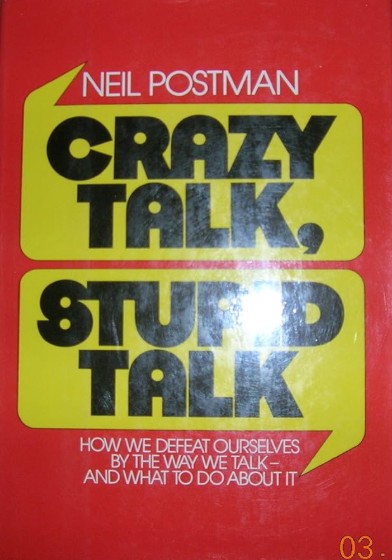Crazy Talk, Stupid Talk (1976)

In Crazy Talk, Stupid Talk, Neil Postman examines how the forms of language shape what we can think and do. Some kinds of talk—measured, responsible, clear—help us judge wisely. Others—vague, euphemistic, slogan-heavy—invite confusion and manipulation. Postman asks us to notice the semantic environments we inhabit (classrooms, courtrooms, newsrooms, living rooms) and to match the right kind of speech to the right situation.
The book distinguishes between talk that aims at truth-seeking and talk that aims at winning. Whether in advertising, politics, or everyday conversation, language can clarify experience—or conceal it behind style, ritual, and technical jargon. Postman offers practical habits for self-defense against bad language: define terms, check sources, watch metaphors, and ask what a statement permits or forbids us to see.
Clear language is a moral choice: it accepts responsibility for what words make possible.
Key Ideas from the Book
- Semantic Environments: Every setting has rules for talk; confusion grows when we import the wrong rules (e.g., treating news as entertainment or therapy as debate).
- Crazy vs. Stupid Talk: “Crazy” talk breaks the rules of a setting; “stupid” talk follows rules that are unfit for learning or truth.
- Language as Action: Words do things—promise, accuse, command—and their force depends on context and audience expectations.
- Jargon & Mystification: Technical terms can clarify, but they also hide power, bias, and uncertainty.
- Habits of Clarity: Define terms, pose falsifiable claims, separate description from evaluation, and test metaphors.
Why It Still Matters
In an era of sound bites, memes, and algorithmic feeds, Postman’s guidance is a toolkit for media literacy and civil discourse. It helps teachers craft clearer prompts, journalists avoid hype, designers name features honestly, and all of us resist weaponized language—from euphemisms that soften harm to slogans that replace thought.